The Declaration of Independence was Published without Social Media
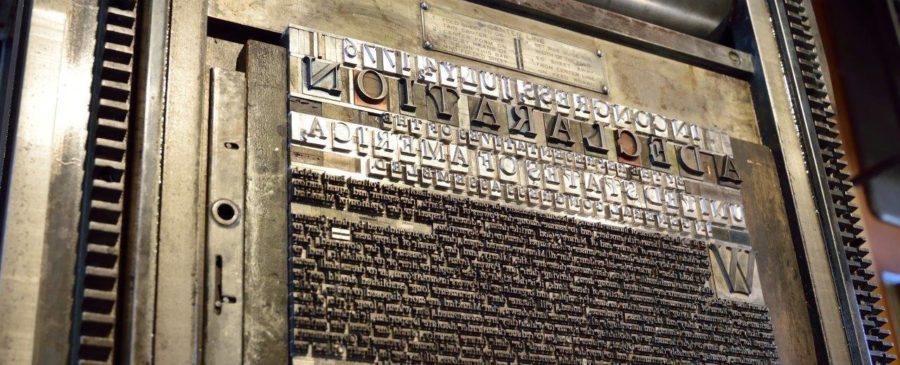
Could we exist without the advanced technology of today? Could the Declaration of independence be published without the advances made possible by the American Spirit of our Founding Fathers? Would we be guaranteed life, liberty and ownership? Would we even have social media or the devices we access it on?
 That all men are by nature equally free and independent and have certain inherent rights, of which, when they enter into a state of society, they cannot, by any compact, deprive or divest their posterity; namely, the enjoyment of life and liberty, with the means of acquiring and possessing property, and pursuing and obtaining happiness and safety.
That all men are by nature equally free and independent and have certain inherent rights, of which, when they enter into a state of society, they cannot, by any compact, deprive or divest their posterity; namely, the enjoyment of life and liberty, with the means of acquiring and possessing property, and pursuing and obtaining happiness and safety.
Section I of the Virginia Declaration of Rights
Printing the Declaration of Independence
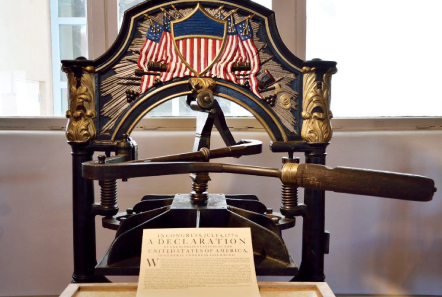 Colonial printers held a rare position in the history of American printing. Printers in Great Britain had a legal monopoly on most printed material, such as the English-language Bible, dictionaries, encyclopedias, and all maps. American printers were limited to producing newspapers, almanacs, sermons, addresses, pamphlets, primers and other lesser items.
Colonial printers held a rare position in the history of American printing. Printers in Great Britain had a legal monopoly on most printed material, such as the English-language Bible, dictionaries, encyclopedias, and all maps. American printers were limited to producing newspapers, almanacs, sermons, addresses, pamphlets, primers and other lesser items.
Most colonial printers had additional businesses. They ran book stores, dry-goods stores and some were postmasters. Printers were editors, publishers, and distributors who wore many hats. Colonial multi-taskers, so to say.
One of their crowning achievements was the nationwide distribution of the Declaration of Independence. Each of its printings has something important to tell us about life in the United States at the time of the birth of our republic.
Congress wrote the Declaration of Independence to be read by as wide an audience as possible. To this end, thirty newspapers in America printed it.
The Library of Congress owns fifteen original copies of these printings. Reading the Declaration as it first appeared in newspapers brings it to life as a living contemporary document that directed the course of history in the United States and throughout the world.
The promises to life, liberty, and the pursuit of happiness had yet to be achieved in much of the world. However, without these promises, we would not have come as far as we have today. Keeping the Declaration of Independence fresh and alive in our hearts and minds will continue the spread of liberty.
July 1776 was pivotal in the history of the United States and of freedom as well. The Continental Congress saw the Declaration of Independence as an impressive instrument. The support of nations like France, the Netherlands, and Poland was crucial. Declaring independence made it possible to take the Revolution out of the arena of insurrection and put it directly on the international stage as a war for independence. The simplicity and eloquence of the Declaration of Independence immediately gained the attention of the world and has inspired democratic movements ever since. Getting the word out was a priority.

Subscribe to Bill's monthly newsletter!
Please enter your name and e-mail below, and we will add you to our mailing list.
The Printers and their Newspapers
John Dunlap, a Philadelphia printer, took the manuscript copy of the Declaration and printed it as a single-sheet broadside on the evening of July 4, 1776. It took a little longer for it to appear in newspapers.
Benjamin Towne, a Philadelphia printer, was the first to print the Declaration in a newspaper. On Saturday, July 6, 1776, The Pennsylvania Evening Post, published every Tuesday, Thursday, and Saturday, carried the Declaration of Independence on the front page.
Mary Katherine Goddard devoted the front page of her newspapers, The Maryland Journal and The Baltimore Journal, to the Declaration on Wednesday, July 10th. She was one of thirty female printers in the colonies. Printing was one the few professions open to women at that time. She was the first woman in the American colonies to serve as postmaster, a position she held fourteen years.
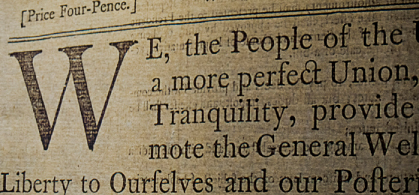 The Pennsylvania Gazette was the most successful newspaper in colonial America. It printed the Declaration of Independence on columns one and two on July 10, 1776. Benjamin Franklin, took control of this paper from Samuel Keimer in 1729, and then used his influence as postmaster to increase its circulation and list of subscribers. Franklin introduced the editorial column, humor, the first weather report and the first cartoon, the famous drawing of a divided snake with the caption "Join or Die" in 1754 in response to the French and Indian massacres of settlers in Virginia and Pennsylvania.
The Pennsylvania Gazette was the most successful newspaper in colonial America. It printed the Declaration of Independence on columns one and two on July 10, 1776. Benjamin Franklin, took control of this paper from Samuel Keimer in 1729, and then used his influence as postmaster to increase its circulation and list of subscribers. Franklin introduced the editorial column, humor, the first weather report and the first cartoon, the famous drawing of a divided snake with the caption "Join or Die" in 1754 in response to the French and Indian massacres of settlers in Virginia and Pennsylvania.
The Pennsylvania Journal was the major competitor to The Pennsylvania Gazette. On July 10, 1776, it printed the Declaration of Independence on page one. It was owned and run by William Bradford and his son Thomas. He established the London Coffee-House in 1754, which served as the seat of the merchants' exchange in Philadelphia. The Bradfords were the official printers to the First Continental Congress. The Journal was a zealous advocate for the American Revolution.
On July 11th, a whole page of the Declaration of Independence was published, using a large font and embellishing it with a border of printers’ decorations, the most elaborate printing of a government document to date.
The New York Packet began publication in January 1776. The printer was Samuel Loudon, a young Irishman, who printed his newspaper on Thursday, so the earliest he could print the Declaration was on Thursday, July 11. The front page was devoted to a speech in the House of Lords by the Duke of Richmond. The Declaration does not appear until page two, column three.
This speech was a fierce debate in the House of Lords on the Revolution. The Duke of Richmond questioned the ability of the British to finance such a war and worried about the world's reaction to Great Britain destroying the farms, homes, and lives of colonials. He even mentioned the trial of Ethan Allen and described this patriot as the worst type of man, however useful in that he could be traded for British prisoners of war. This diatribe on the American Revolution precedes the Declaration of Independence. If anyone had any doubts about the need for independence, the Richmond speech quickly changed their minds. Reading the Declaration roused the reader to support and fight for freedom.
When I wrote 20/20: A Clear Vision for America, I described the issues that “We the People” are facing in 2016. We face the same concerns in 2016 our Founding Fathers faced in 1776. Sadly, now we are now facing tyranny from within. In 1776, about fifteen percent of Americans wanted sovereignty. I hope and pray that more citizens want it today. We must band together to agree on a new course.
20/20: A Clear Vision for America is clearly the new vision Americans need.
Stay tuned. The Muckster is here with a Clear Vision for Our future.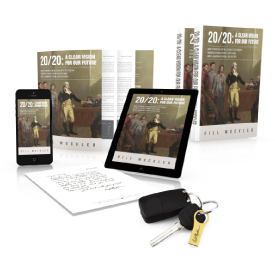
Read more of my “casually sarcastic” articles to discover that I am an equal opportunity critic of all types of anarchy and nonsense. Check out the blog.
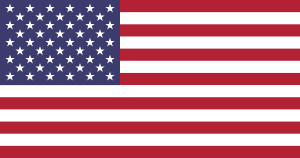
Spiritus meus es tu. Ego semper fidelis.
God Bless us all and God Save our America. Our country, our Constitution, our culture, our civilization and our children need you now more than ever. Don’t ever forget what these brave people did to unite us and save us from tyranny.
The Perfect Gift for Any American
20/20: A Clear Vision for America is priced perfectly. A priceless value. You can spend a lot more, but your recipient will never receive as much value as a gift that is personally inscribed and signed by the author. And the author pays all shipping and handling charges plus any applicable taxes. There are no extra charges.
All this value for so little effort. No shopping. No lugging stuff. No standing in long lines. No looking for your auto in a cold parking lot. It’s all done for you.
The Gift with the Perfect Message
The reader will learn how to regain our country’s liberty and freedom. They will relate to the 20 solutions to America’s 20 worst problems that are intensified by senseless policies imposed by the political establishment. 20/20: A Clear Vision for America is a book of common-sense answers written in a style readers can readily identify with.
Something Extra Special for that Extra Special Person
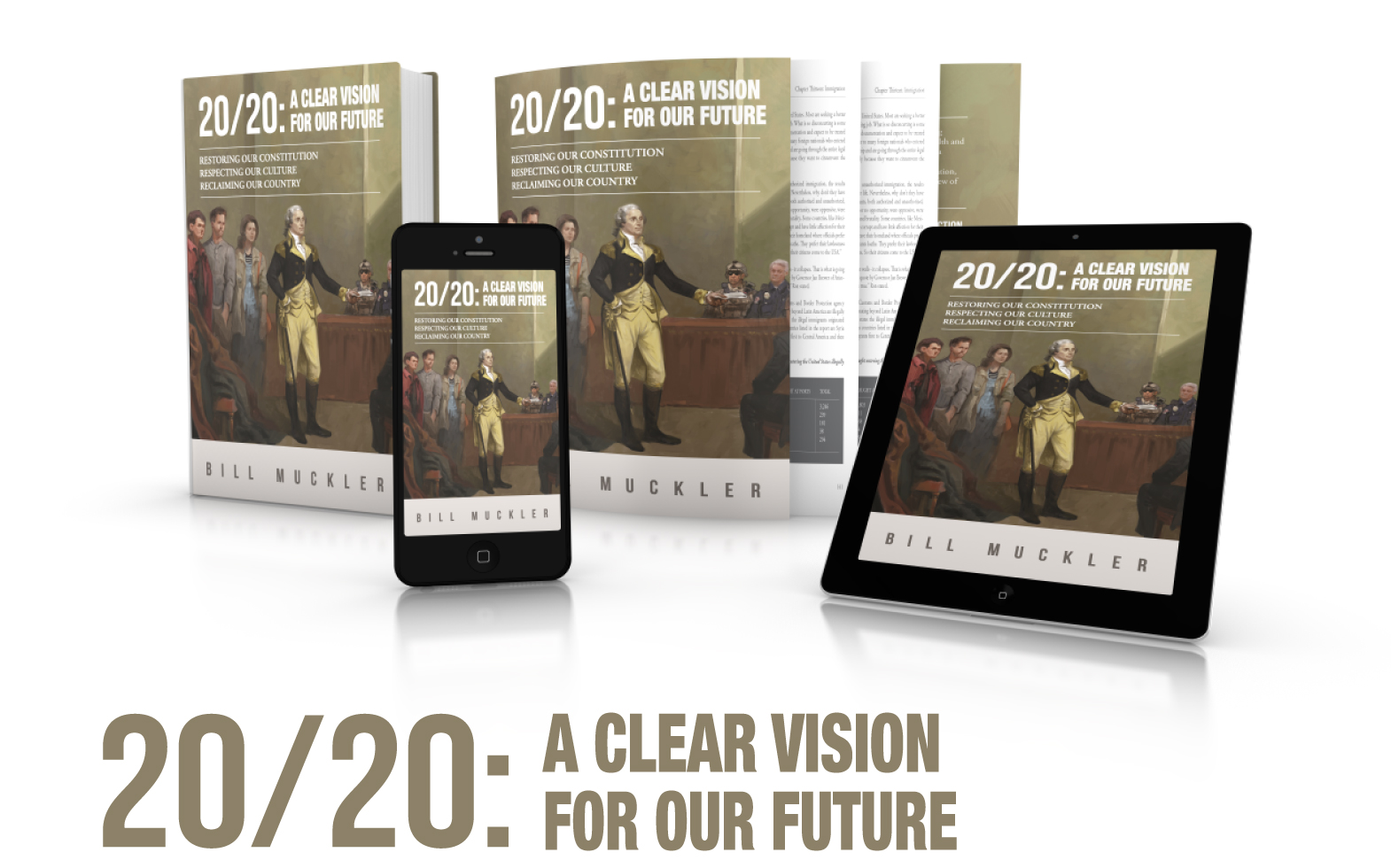 Did you know many of us support inventors, authors, artists and other entrepreneurs through crowdfunding? It’s a wonderful way to help independent creators bring their projects to life.
Did you know many of us support inventors, authors, artists and other entrepreneurs through crowdfunding? It’s a wonderful way to help independent creators bring their projects to life.
Did you know that many authors use the names of their family and friends as characters in their books? It is a way to honor and memorialize loved ones.
Do you know that I am writing a new book and need family and friends to help tell the story of the Constitution and other important topics? Did you know that I want to honor you with a part in the narrative?
Do you know that the names of my backers and supporters are on my webpage? Do you know that those backers and supporters will also be acknowledged forever in print in my new book?
Do you know that I would be honored to have your name listed as one of my backers and supporters? Do you know that I want you to be on my team? Did you know how important it is that I hear from you?
Do you know there will be a void in my book and in my heart if you don’t appear in my new 20/20 Vision book? It’s safe and easy to go to my website and pledge $250, $100, or $50 and you’ll get lots of priceless rewards including lots of signed books as gifts to your family and friends who will read your name in the new book. Time is running out. I need your name now!

Subscribe to Bill's monthly newsletter!
Please enter your name and e-mail below, and we will add you to our mailing list.

Finally, an author who brings you solutions, instead of problems.
Americans have lost faith in their overreaching federal government. “We the People” don’t need to be overregulated or have their taxes misspent. Americans are victims of a crumbling economy, high prices and stagnant wages. They view government as bloated and politicians as corrupt.
They do not trust the leadership at any level. They see politicians of both parties as self-centered narcissists whose only objective is re-election. The author is like you, with one principal difference and 20 reasons for optimism. His “Vision” of America is “clear.” It is a vision of the Constitution and America the way it could be, the way it should be. The author’s eyesight is twenty-twenty.

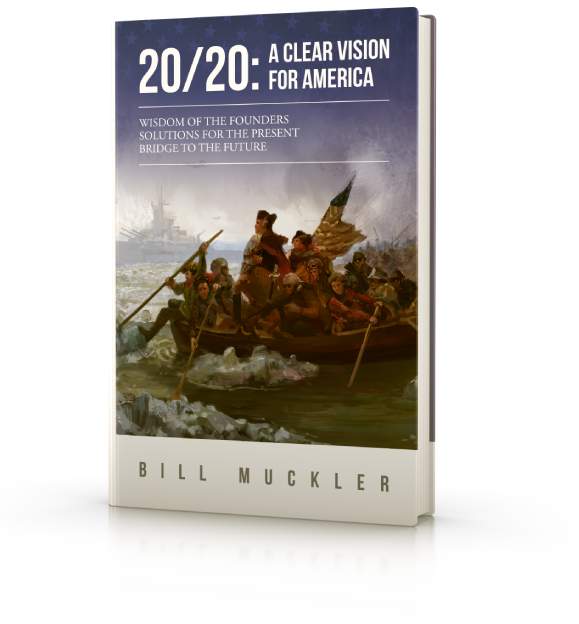
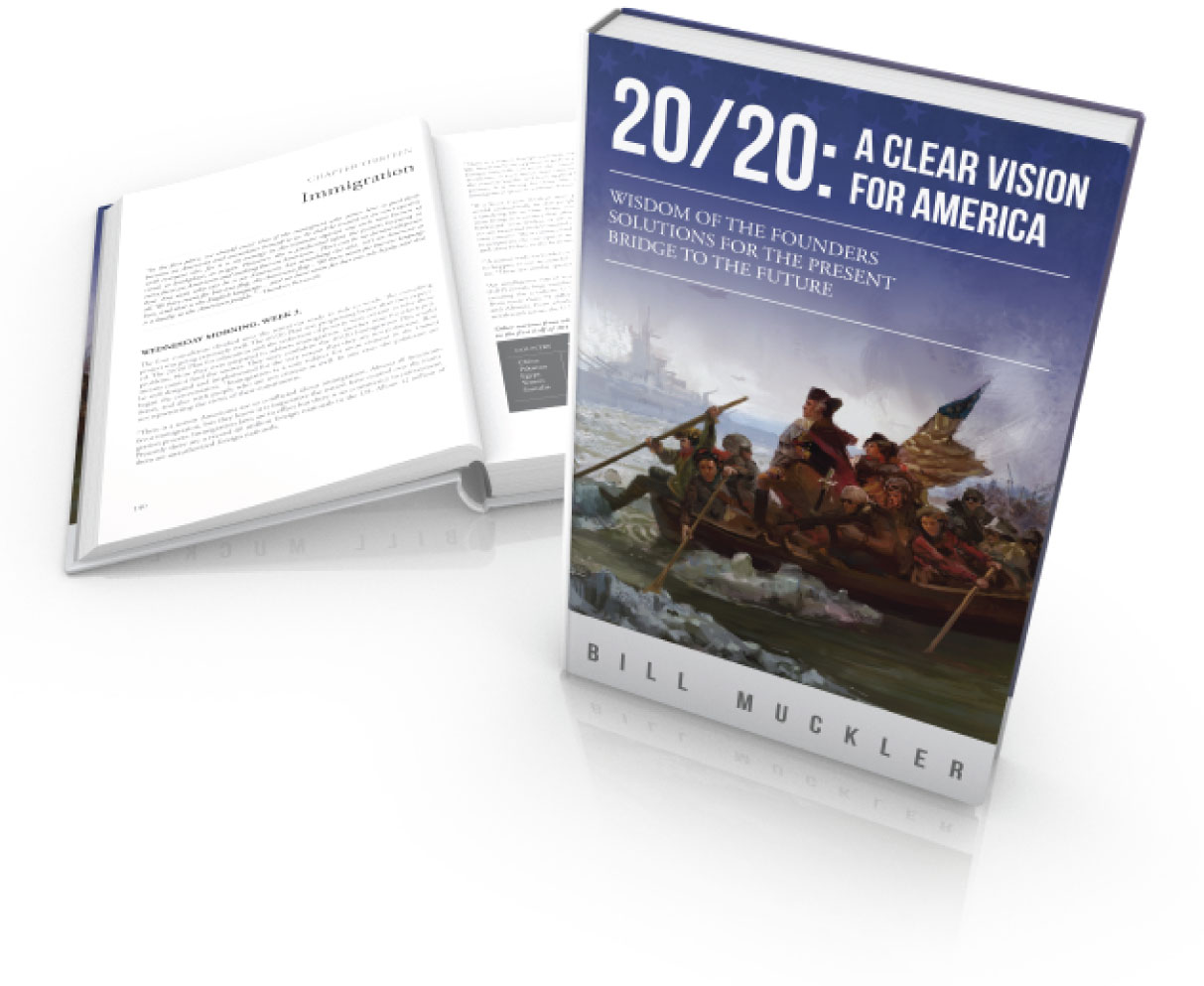

Recent Comments